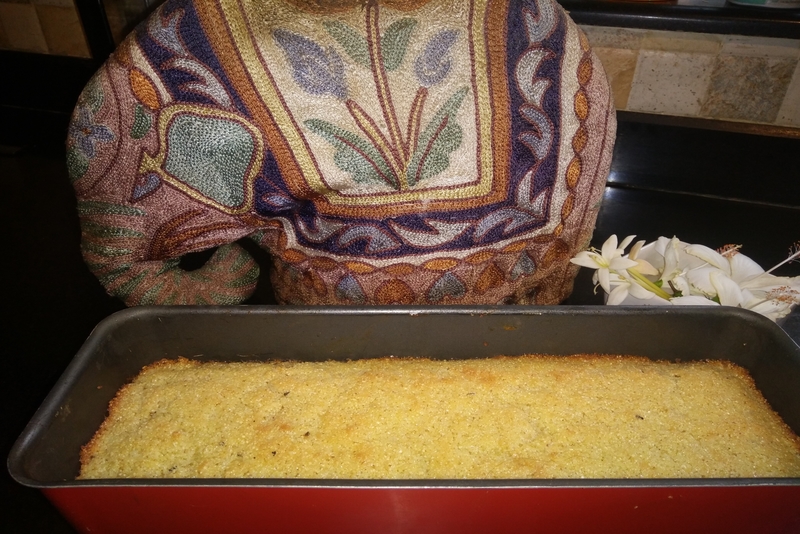Soaking the lawn with love, in the UK

The Brits enjoy a love -hate relationship with their lawns. Keeping a perfect lawn is serious business in the UK and every home with even a tiny patch of lawn proudly maintains it to perfection. Soft green patches of springy grass, trimmed to look like a green carpet in the garden. So while I spent three months there with my son, I developed a love for the lawns, both at the back and the front of the house.
So how are these lawns kept so well we wondered? Checking at a local garden centre in Woking, Surrey, we were told that one needed a String trimmer, Rotary lawn mower with a sharp blade, a rake and a broom as basic tools, plus a lot of hard work and sweat, to keep your lawn looking inviting and green.
The lawns were terribly over grown in David's new home. He had bought it from senior citizens who had left the garden in a total run down condition. " Don't try mowing that height of grass with your regular mower," warned the friendly garden centre guy, " you are asking for a burned out lawn mower. Trim first. Get yourself a string trimmer, and use it to cut down the grass, before mowing. The strimmer will chop off the tall grass and then one needs to rake all the long heads, with a grass rake. Collect it in heaps and throw it all onto the compost heap.
" Do not use line strimmers to cut grass against the bark of trees. This will damage the bark, often severely enough to kill the tree. Instead, establish a grass-free, mulched area around the tree so that close trimming is not necessary," said the guy at the Garden Centre which made sense especially with the fruiting apple and pear trees in the garden.
David fixed the blades of the mower at the right height. Apparently, according to the brochure we got with the grass, each grass type has its ideal height range. The bahia, blue gramma, and buffalo grasses need 2 to 3 inches high. Mow fescue, Kentucky bluegrass, ryegrass, and St. Augustine grasses about 1-1/2 to 2-1/2 inches high. Cut common Bermuda, centipede, and zoysia grasses about 1 to 2 inches high. Cut hybrid Bermuda lowest, about 1 inch high. Our is a common Bermuda and makes a pretty good lawn if you dig out the dandelions and daisies.
David would adjust the blade height by placing the mower on a hard surface, disconnect the spark plug, and measure the height of the blades with a tape measure. Then he would adjust the deck height to the desired level. We would test the setting by mowing a patch of grass and checking the grass height and adjusting the mower if necessary. Mowing on the high side of the range they say improves drought resistance and root health.
Common sense says keep the blades of the mower sharp. It is good to sharpen the blade of rotary mowers at least once a season, to make your job quicker and smoother. This is done by disconnect the spark plug and with mower upended, remove the blade. Sharpen the blade on a bench grinder or with a heavy-duty mill file, and be sure to check blade balance afterwards (center it on a nail hammered into a wall). Or if you prefer, take your blade to a mower repair shop and let them sharpen it.
Check the lawn and preferably follow the one-third rule. Mow when the grass blades are about one-third taller than the recommended height. To maintain grass at two inches high, for example, mow when it reaches no more than three inches. Only remove one-third of the grass height when you mow to prevent damage and stress to the lawn. Taking too much off at once starves the roots and may expose new lower leaves to sunburn.
We found that mowing the grass when it's dry made the chore quick and easy . Wet grass cuts unevenly, and requires raking to remove the matted clippings, which smother the growth of new grass. Cutting wet grass also promotes the growth and spread of disease organisms.
Rake up clumps but leave small and finely chopped clippings on the lawn where they will decompose and improve the soil's health, but remove large clumps that can smother the grass. We also swept clippings off the path where they get blown by the mower for a neat appearance.
A few tips which help you maintain a perfect lawn --- Keep your mower blades sharp to prevent damage to the grass blades. Ragged cuts invite disease and make the lawn go brown. Alternate mowing directions each time you mow to help keep grass growing upright and to prevent soil compaction. Mow at a 45- or 90-degree angle to your last pattern.
Happy mowing. It's a fun chore especially during a warm 'Indian Summer' in the UK.
So how are these lawns kept so well we wondered? Checking at a local garden centre in Woking, Surrey, we were told that one needed a String trimmer, Rotary lawn mower with a sharp blade, a rake and a broom as basic tools, plus a lot of hard work and sweat, to keep your lawn looking inviting and green.
The lawns were terribly over grown in David's new home. He had bought it from senior citizens who had left the garden in a total run down condition. " Don't try mowing that height of grass with your regular mower," warned the friendly garden centre guy, " you are asking for a burned out lawn mower. Trim first. Get yourself a string trimmer, and use it to cut down the grass, before mowing. The strimmer will chop off the tall grass and then one needs to rake all the long heads, with a grass rake. Collect it in heaps and throw it all onto the compost heap.
" Do not use line strimmers to cut grass against the bark of trees. This will damage the bark, often severely enough to kill the tree. Instead, establish a grass-free, mulched area around the tree so that close trimming is not necessary," said the guy at the Garden Centre which made sense especially with the fruiting apple and pear trees in the garden.
David fixed the blades of the mower at the right height. Apparently, according to the brochure we got with the grass, each grass type has its ideal height range. The bahia, blue gramma, and buffalo grasses need 2 to 3 inches high. Mow fescue, Kentucky bluegrass, ryegrass, and St. Augustine grasses about 1-1/2 to 2-1/2 inches high. Cut common Bermuda, centipede, and zoysia grasses about 1 to 2 inches high. Cut hybrid Bermuda lowest, about 1 inch high. Our is a common Bermuda and makes a pretty good lawn if you dig out the dandelions and daisies.
David would adjust the blade height by placing the mower on a hard surface, disconnect the spark plug, and measure the height of the blades with a tape measure. Then he would adjust the deck height to the desired level. We would test the setting by mowing a patch of grass and checking the grass height and adjusting the mower if necessary. Mowing on the high side of the range they say improves drought resistance and root health.
Common sense says keep the blades of the mower sharp. It is good to sharpen the blade of rotary mowers at least once a season, to make your job quicker and smoother. This is done by disconnect the spark plug and with mower upended, remove the blade. Sharpen the blade on a bench grinder or with a heavy-duty mill file, and be sure to check blade balance afterwards (center it on a nail hammered into a wall). Or if you prefer, take your blade to a mower repair shop and let them sharpen it.
Check the lawn and preferably follow the one-third rule. Mow when the grass blades are about one-third taller than the recommended height. To maintain grass at two inches high, for example, mow when it reaches no more than three inches. Only remove one-third of the grass height when you mow to prevent damage and stress to the lawn. Taking too much off at once starves the roots and may expose new lower leaves to sunburn.
We found that mowing the grass when it's dry made the chore quick and easy . Wet grass cuts unevenly, and requires raking to remove the matted clippings, which smother the growth of new grass. Cutting wet grass also promotes the growth and spread of disease organisms.
Rake up clumps but leave small and finely chopped clippings on the lawn where they will decompose and improve the soil's health, but remove large clumps that can smother the grass. We also swept clippings off the path where they get blown by the mower for a neat appearance.
A few tips which help you maintain a perfect lawn --- Keep your mower blades sharp to prevent damage to the grass blades. Ragged cuts invite disease and make the lawn go brown. Alternate mowing directions each time you mow to help keep grass growing upright and to prevent soil compaction. Mow at a 45- or 90-degree angle to your last pattern.
Happy mowing. It's a fun chore especially during a warm 'Indian Summer' in the UK.

Related Articles
Editor's Picks Articles
Top Ten Articles
Previous Features
Site Map
Content copyright © 2023 by Marianne de Nazareth. All rights reserved.
This content was written by Marianne de Nazareth. If you wish to use this content in any manner, you need written permission. Contact Marianne de Nazareth for details.





 -resizeimage.jpg.jpg)

